ORS-4 Payload Overview
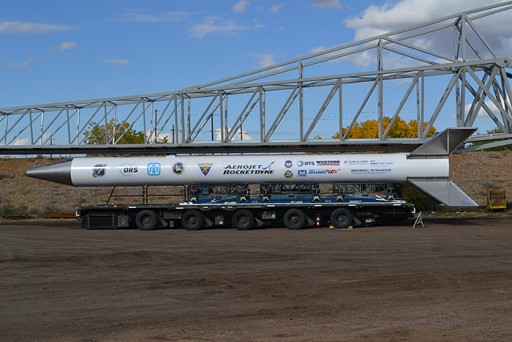
ORS-4, the fourth dedicated mission for the Operationally Responsive Space Office, marks the first launch of the SPARK/Super Strypi rocket in the continued efforts of the ORS program to establish tactical space capabilities making use of small satellites and launch vehicle that can be launched on short notice.
Due to a string of launch-vehicle related delays, the maiden flight of SPARK slipped from 2013 and is now expected to take place in 2015. A technical overview of SPARK/Super Strypi can be found here. According to information from the payload operators, the ORS-4 mission is targeting an orbit of 415 by 490 Kilometers at an inclination of 94.7 degrees.
HiakaSat
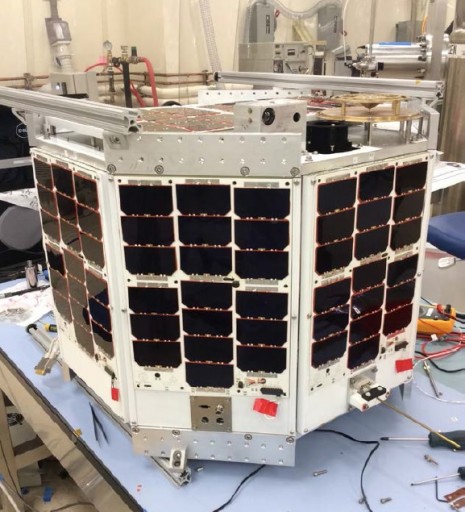
HiakaSat (Hyperspectral Imaging, Aeronautical Kinematic Analysis Satellite), also referred to as HawaiiSat-1, is a small satellite mission developed and operated by students of Hawaii University. The satellite is the primary payload of the inaugural launch of the SPARK / Super Strypi rocket, completing the ORS-4 mission in 2015.
HiakaSat aims to demonstrate the satellite bus as a cost-effective on-orbit platform for technology demonstrations, to conduct remote sensing with the Space Ultra-Compact Hyper-Spectral Imager, to demonstrate two color cameras, to provide workforce development opportunities for students and recent graduates, and to make further developments of the ground infrastructure needed for the integration, testing and operation of satellites.
The satellite finished assembly and testing in 2013, but had to wait over two years for its launch due to delays on the SPARK launch vehicle side.
>>>Detailed Technical Overview of HiakaSat
EDSN – Edison Demonstration of SmallSat Networks
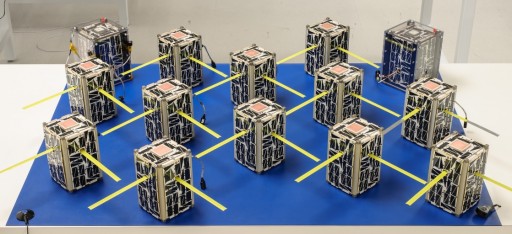
EDSN, the Edison Demonstration of SmallSat Networks, comprises a loose formation of small satellites to demonstrate solutions for SmallSat projects to enable a wide array of future applications in science, commercial, educational and defense space systems. The EDSN project aims to demonstrate cross-satellite data communications for flexible data correlation and distribution as well as simplified satellite operations and data downlink. Being a constellation of satellites outfitted with space weather sensors, EDSN can deliver spatially and temporarily correlated data sets that can not be acquired from single satellite missions.
The first batch of eight EDSN satellites were developed at NASA’s Ames Research Center and are based on a 1.5U CubeSat platform provided by Pumpkin Inc.
Argus
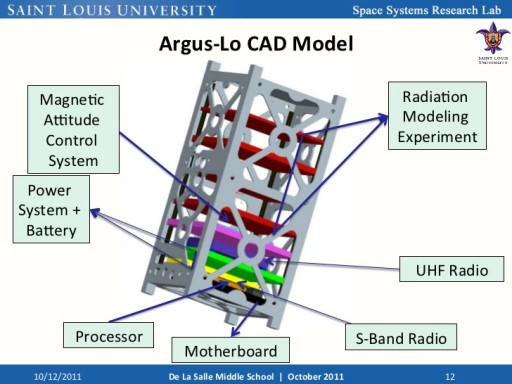
Argus, also known as SLU-02, is a 2U CubeSat that is the result of a collaborative project between the Space Systems Research Laboratory at St. Louis University and the Institute for Defense and Space Electronics (ISDE) at Vanderbilt University. The goal of the mission is to explore and model the effects of space radiation on modern electronics systems. This will be accomplished by comparing a predictive models developed at Vanderbilt with the measured rates of in-orbit radiation events.
The 10 by 10 by 20-centimeter satellite has a mass of 3.0 Kilograms based on the SCARAB satellite bus – the SLU Core Aerospace Research Application Bus designed as a one-size-fits-all, multi-mission CubeSat bus for fast implementation of missions hosting various payloads. The satellite uses a structural frame provided by Pumpkin Inc., incorporating a PIC-24 CubeSat Kit Microcontroller, body-mounted solar panels & Li-Ion/polymer batteries and a UHF/VHF transceiver for communications. The satellite uses a passive attitude control system.
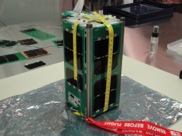
The motivation behind Argus is the current state of radiation models with respect to the effect of radiation on electronics which are based on electronics standards from the 1970s and 80s and computational resources from the same period. Modern electronics are completely different in architecture, much smaller, faster and more complex than the systems of three decades ago. Therefore, LSU concludes, the existing models are not applicable to today’s space systems and new data is needed to revise the models.
Researchers at Vanderbilt came up with new prediction models, but these models require verification and calibration in an actual space environment with its characteristic particle inflow and particle energies. The heart of the Argus satellite is the Independence Payload developed at Vanderbilt, coupled with the Vanderbilt University Controller which is in charge of logging all radiation-induced events for later downlink to the ground. The Independence Payload includes three experiments – a single-event upset detection system, a single-event latchup experiment, and a particle environment monitor.
PrintSat
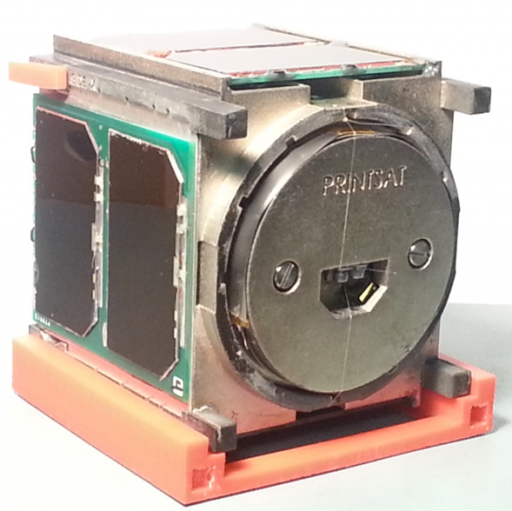
PrintSat is a 1U, 1-Kilogram CubeSat built by students at Montana State University using additive manufacturing (3D printing) of nano-carbon-impregnated plastic to construct the entire satellite structure. Additive manufacturing has grown in importance in various sectors of industry and research as a very inexpensive and fast way to produce mechanical parts.
The goal of the mission is to demonstrate the effectiveness of additive manufacturing and the Windform XT material for application as a material for space structures. PrintSat uses body-mounted solar cells for power generation and a gravity-gradient stabilization system. Its payload consists of several onboard sensors to quantify the changes undergone by the material in the space environment, i.e. the thermal changes occurring in Low Earth Orbit, space radiation, atomic oxygen corrosion and the vacuum of space. The sensor payload is comprised of torsional strain gauges, surface resistivity monitors and a radiation microdosimeter. Payload data and status telemetry is downlinked from the satellite every 60 seconds at the amateur UHF wavelength of 437MHz reaching a data rate of 9,600bps.
Supernova Beta
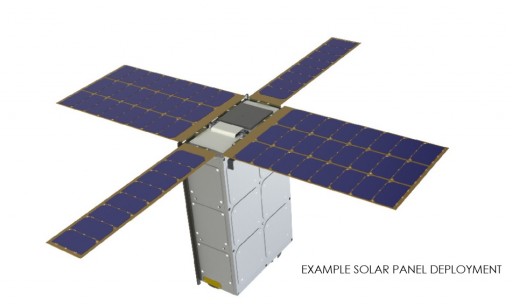
Supernova-Beta is a prototype satellite built and operated by CubeSat manufacturer Pumpkin Inc. as a demonstration mission of the company’s 6U CubeSat platform that measures 23.9 by 10.6 by 36.5 centimeters in size. Supernova is a satellite platform designed to be highly configurable for a rapid integration of enhanced CubeSat missions, offering a payload volume of 7000cm². The Supernova chassis has a mass of 1.64 Kilograms and the total allowable mass of the satellite is specified as 12 Kilograms by Pumpkin.
The test objectives of the Supernova-Beta mission include the demonstration of key satellites systems including the Electrical Power System, Global Positioning System, Attitude Determination and Attitude Control Systems, Command and Data Handling and imagers.
Three communications systems are part of the spacecraft, two transceivers for the reception and transmission of data and one transmit-only system. The transmit-only system is a 435MHz UHF beacon operating at a data rate of 1,200bps and an output power of 2 Watts, delivering basic health and status data every 30 seconds. A Simplex Globalstar modem will be used for satellite-to-satellite communications for continuous telemetry and command connectivity with the satellite. The system operates at a transmission frequency of 1610MHz and a reception frequency at 2483.5 MHz. Finally, an S-Band transceiver is used for data downlink and command uplink during ground station passes reaching a 1Mbps downlink rate and a 64kbps uplink rate at operational frequencies of 2258 MHz and 2097.7MHz, respectively.
STACEM
STACEM is a 3-Unit CubeSat designed, built and operated by the Space Dynamics Laboratory, Utah State University Research Foundation. The satellite demonstrates a miniaturized multi-spectral payload for the acquisition of imagery in the visible and near infrared wavelengths and hyperspectral channels. Imagery is to be used in environmental monitoring. The launch of STACEM on the SPARK launch vehicle is financed by the U.S. National Reconnaissance Office.
